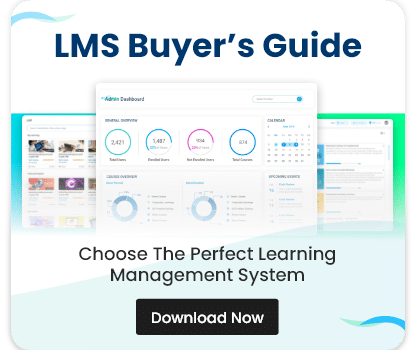Step 1: Conduct a Needs Analysis
Any improvement plan should begin by identifying what works and where the gaps lie. A thorough needs analysis involves gathering feedback from learners, instructors, and administrative staff. Look at user surveys, course completion data, and login frequency to uncover pain points that hinder progress.
A study by IBM found that participants learn five times more material in online learning courses using multimedia content than in traditional classroom settings. Insights like these highlight why it’s crucial to align your platform’s features with actual learner preferences and organizational goals. By understanding your users and their behaviors, you’ll have a data-driven foundation for subsequent LMS enhancements.
Step 2: Enhance User Experience and Interface Design
A user-friendly LMS interface can dramatically improve engagement and retention. When navigation is intuitive, learners can focus on mastering content rather than navigating complex menus. A consistent color scheme, clear labeling, and responsive design are key elements that simplify the user journey.
Modern learners frequently access course materials on phones or tablets, and roughly 90% of corporations now use eLearning—up from just 4% in 1995—underscoring the critical need for mobile optimization. A visually appealing, accessible design fosters confidence, reduces frustration, and encourages learners to return for more.
Step 3: Provide Diverse and Engaging Content Formats
Learners differ in how they consume information, making content diversity a critical component of an effective LMS. Incorporate text-based guides, videos, podcasts, simulations, and interactive quizzes to cater to various learning styles.
Data from eLearning Industry shows that organizations using robust LMS solutions experience a 25% increase in employee retention, partly because varied content keeps learners interested and motivated. Interactivity is equally vital; scenario-based exercises, quick polls, or discussion prompts encourage active participation, reinforcing knowledge retention and practical skill application.
Step 4: Implement Personalized Learning Pathways
Personalized learning acknowledges that each user arrives with unique skills, objectives, and experiences. Adaptive quizzes can automatically tailor subsequent modules to match a learner’s performance, while self-paced options grant flexibility. Many LMS platforms also offer elective courses, letting advanced users explore specialized areas without holding back those who need to revisit fundamentals.
In a LinkedIn Learning report, 64% of L&D professionals emphasized online learning as crucial for developing employee soft skills—indicating that personalization can extend beyond technical knowledge to broader professional growth.
Step 5: Leverage Gamification Elements
Gamification introduces fun and competition, two strong motivators in education. By awarding points, badges, or other rewards for completing modules or passing quizzes, you tap into learners’ desire for achievement. Leaderboards can spur friendly rivalry, prompting higher levels of participation. While these elements shouldn’t overshadow core educational objectives, a dash of gamification can significantly reduce dropout rates. In turn, consistent engagement helps learners reinforce new skills or knowledge, enhancing overall outcomes.
Step 6: Use Data Analytics and Reporting
Data analytics transforms raw metrics into actionable insights. A modern LMS can track enrollment trends, time-on-task, quiz scores, and even collaborative engagement. Reviewing these data points regularly allows administrators to refine content, identify bottlenecks, and highlight best practices for broader implementation. If a particular module exhibits low completion rates, it may be time to revisit its design or break it into smaller, more digestible chunks. Over time, these incremental improvements can lead to a lean, optimized learning ecosystem that aligns closely with both learner needs and organizational objectives.
Step 7: Encourage Community and Collaboration
Community is a powerful driver of ongoing learning success. Integrating discussion forums, group projects, and live chat sessions fosters a sense of camaraderie and provides peer support. Learners often learn as much from each other’s experiences as they do from formal course materials. Live webinars and virtual classrooms simulate the immediacy of face-to-face interactions, maintaining engagement and excitement.
According to LinkedIn Learning, collaborative learning boosts material retention and helps apply knowledge to real-world scenarios. By creating a supportive community, you motivate learners to share ideas, seek help, and remain committed to their courses until completion.

















